-
Załączniki bezpieczeństwa
Załczniki do produktuZałączniki dotyczące bezpieczeństwa produktu zawierają informacje o opakowaniu produktu i mogą dostarczać kluczowych informacji dotyczących bezpieczeństwa konkretnego produktu
-
Informacje o producencie
Informacje o producencieInformacje dotyczące produktu obejmują adres i powiązane dane producenta produktu.Revell
-
Osoba odpowiedzialna w UE
Osoba odpowiedzialna w UEPodmiot gospodarczy z siedzibą w UE zapewniający zgodność produktu z wymaganymi przepisami.
Revell 65147 Patrol Torpedo Boat PT-109 - Model Set 1/72
Plastikowy model statku do sklejania. Zestaw modelarski z akcesoriami ( podstawowe farbki, pędzlek, klej ).
Zalecane kolory farb: 32105, 32109, 32131, 32136, 32162, 32165, 32168, 32179, 32183, 32186, 32189, 32191, 32195, 32199, 32302, 32382.
PT-109 was an 80’ Elco PT boat (patrol torpedo boat) last commanded by Lieutenant (junior grade) John F. Kennedy, future United States President, in the Pacific theater during World War II. His actions to save his surviving crew after the sinking of PT-109 made him a war hero. PT-109's ramming by a Japanese destroyer contributed to Kennedy's long-term back problems and required months of hospitalization at Chelsea Naval Hospital. Kennedy's postwar campaigns for elected office referred often to his service on PT-109.
PT-109 belonged to the PT-103 class, hundreds of which were completed between 1942 and 1945, by Elco, in Bayonne, New Jersey. The ship's keel was laid 4 March 1942, as the seventh motor torpedo boat (MTB) of the 80-foot-long (24 m) class built by Elco, and was launched on 20 June and delivered to the Navy on 10 July 1942 to be fitted out in the New York Naval Shipyard in Brooklyn.
PT-109 could accommodate a crew of three officers and 14 enlisted men, with the typical crew size between 12 and 14. Fully loaded, it displaced 56 tons.
The Elco boats were the largest PT boats operated by the U.S. Navy during World War II. At 80 feet (24 m) and 40 tons, they had strong wooden hulls, constructed of two layers of 1-inch (2.5 cm) mahogany planking, excellent for speed, but provided very limited protection in combat.
PT-109 was powered by three 12-cylinder 1,500 horsepower (1,100 kW) Packard gasoline engines (one per propeller shaft), with a designed top speed of 41 knots (76 km/h; 47 mph).
To conserve space and improve weight distribution, the outboard or wing engines were mounted with their output ends facing forward, with power transmitted through V-drive gearboxes to the propeller shafts. The center engine was mounted with the output flange facing aft, with power transmitted directly to the propeller shaft.
The engines were fitted with mufflers on the transom (extreme rear of boat) to direct the exhaust underwater, which had to be bypassed for anything other than idle speed. The mufflers were both to mask the engines' noise from the enemy and to improve the crew's chance of hearing enemy aircraft.

















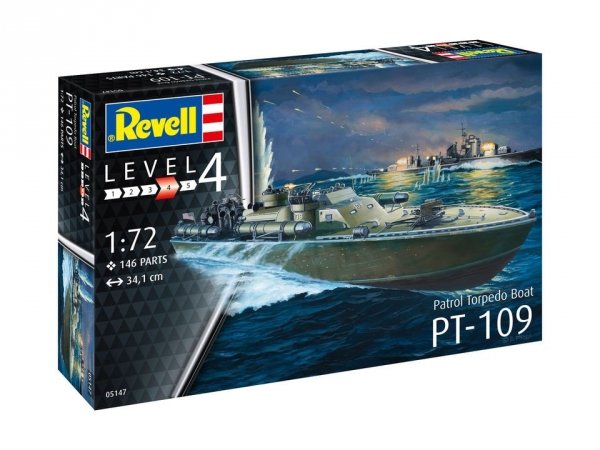
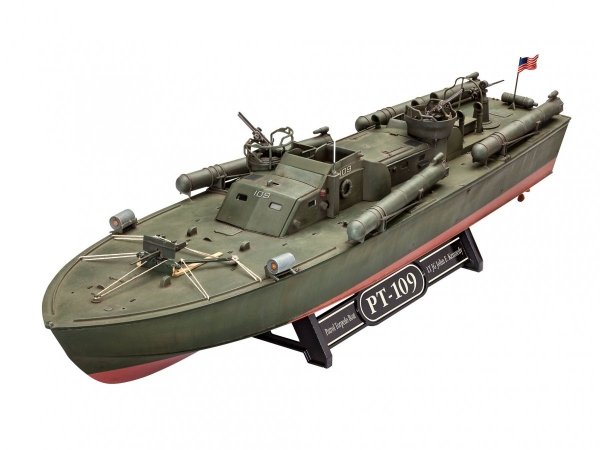
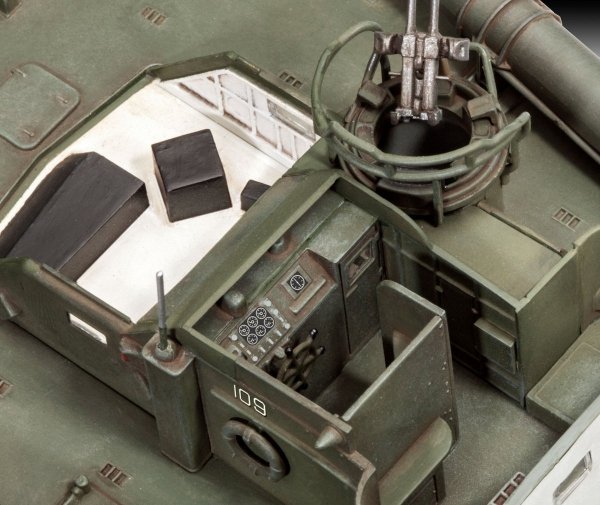
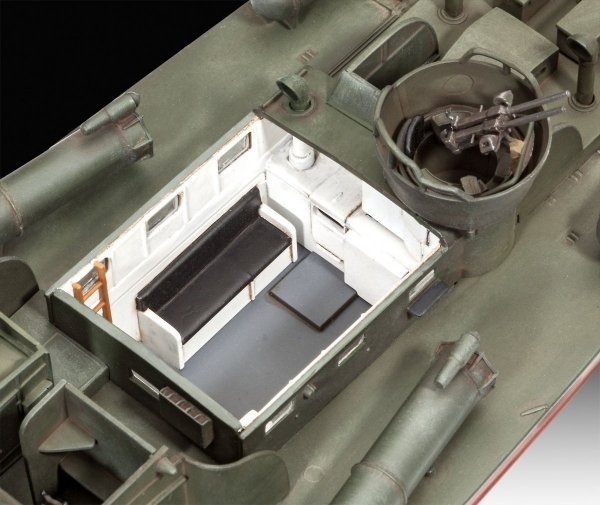

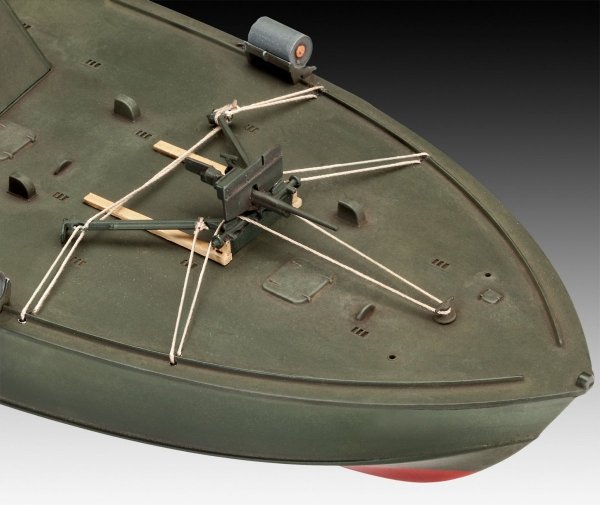
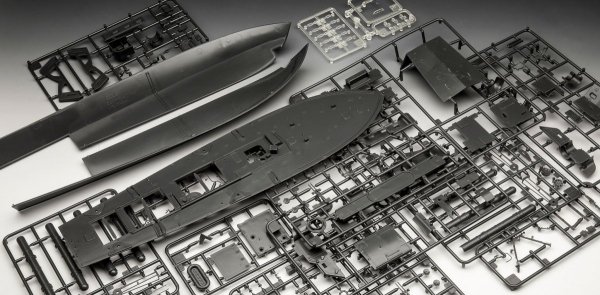
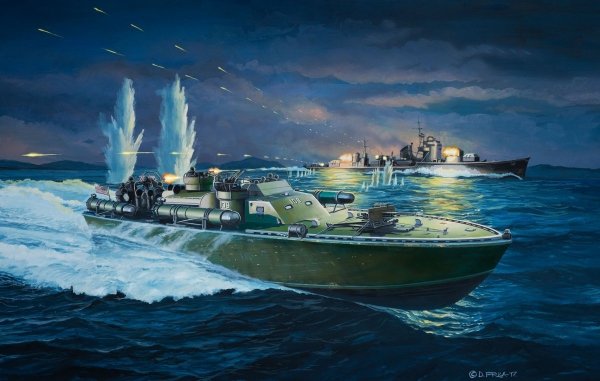
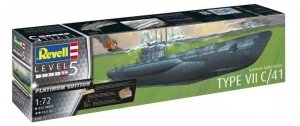
 4 szt.
4 szt.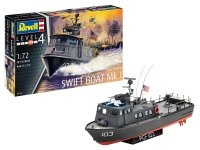
 1 szt.
1 szt.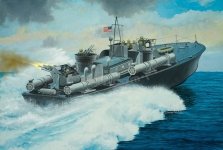
 2 szt.
2 szt.